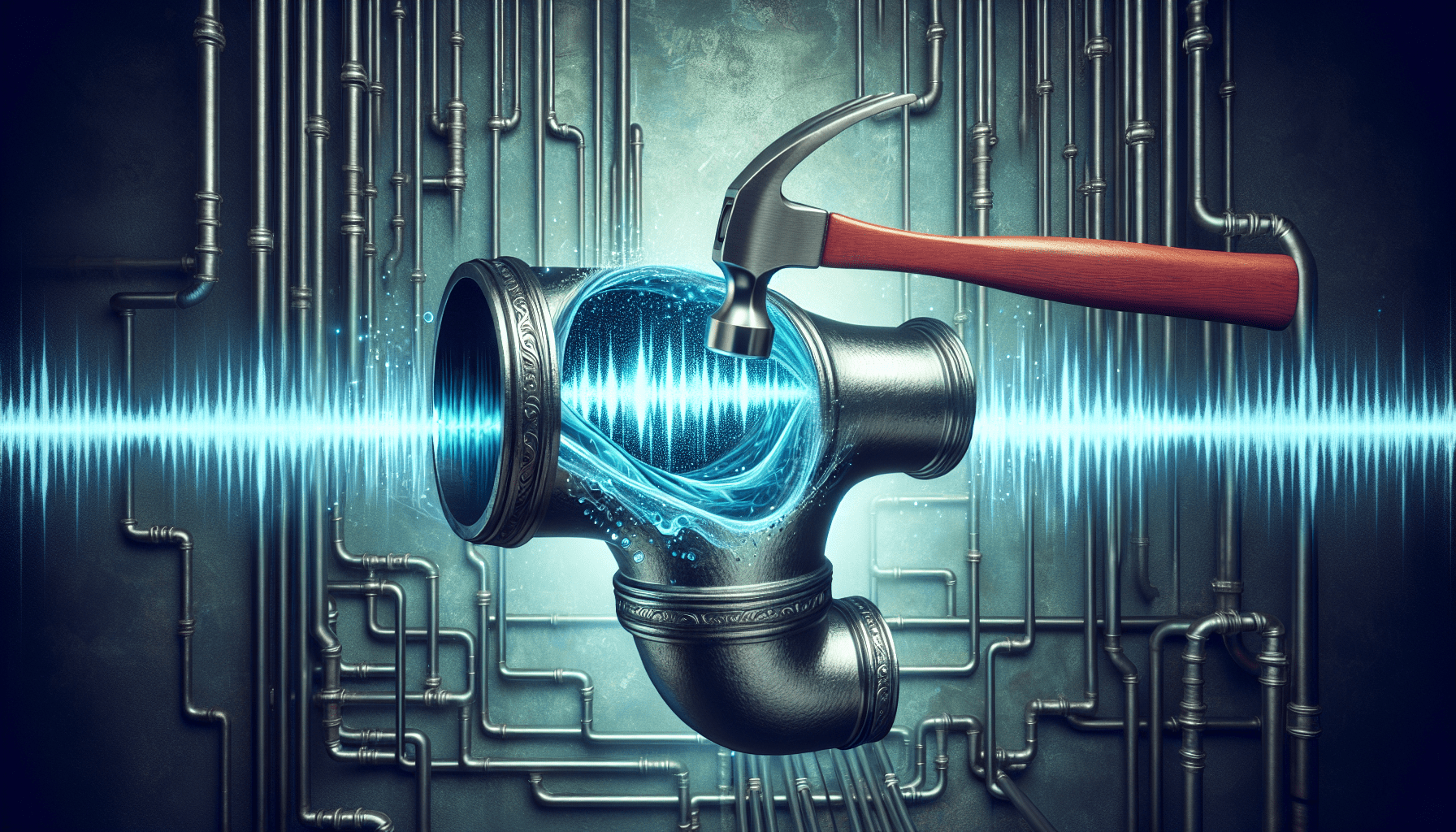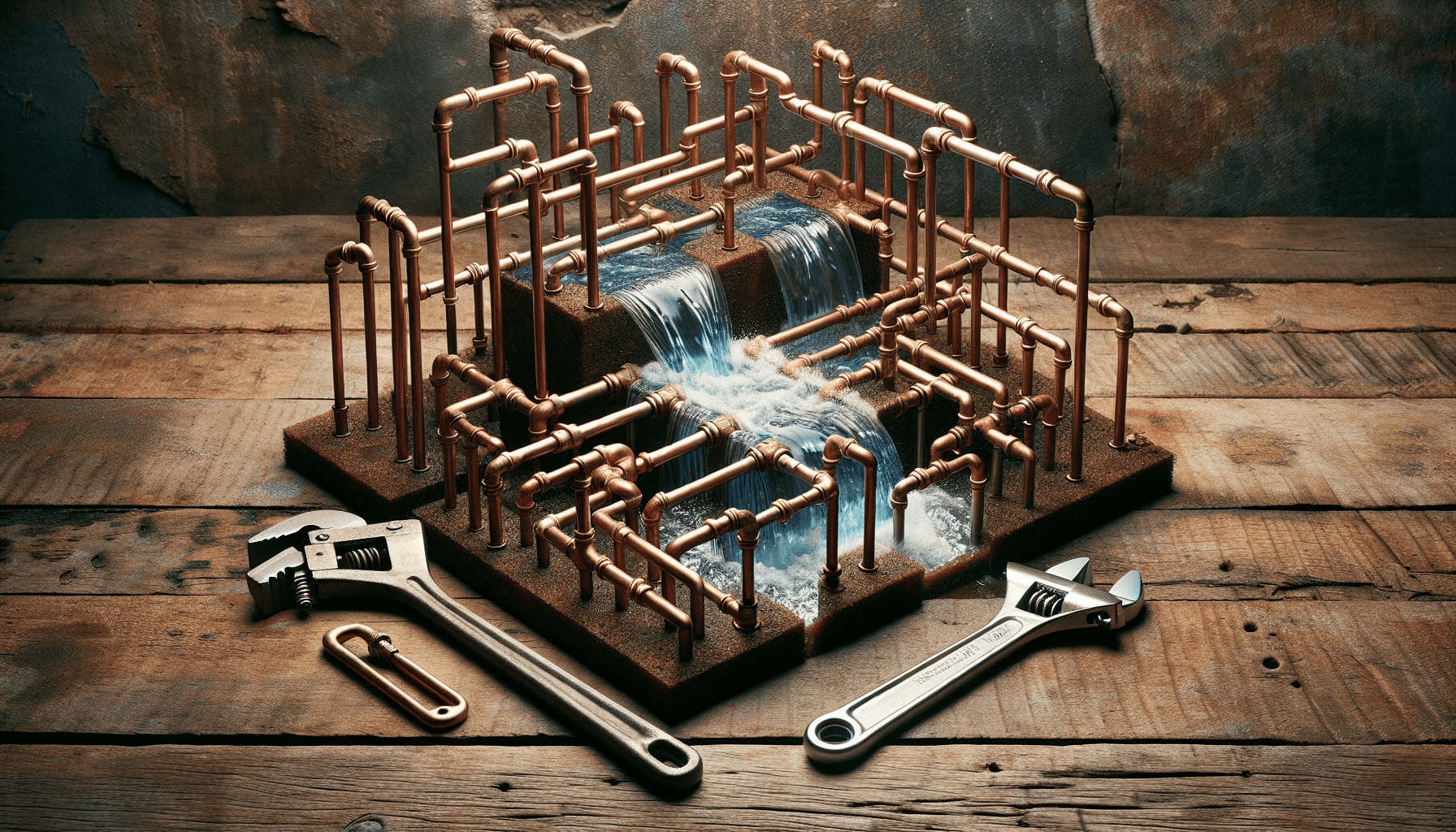In this article, we will take a friendly and informative journey into the fascinating world of plumbing acoustics. Have you ever wondered why certain plumbing systems make loud noises, or what causes those mysterious banging sounds? Well, wonder no more! By exploring the basics of plumbing acoustics, you’ll gain valuable insights into how sound travels through your pipes, the factors that influence those annoying noises, and even some practical tips to reduce the clamor. So, sit back, relax, and let’s embark on this educational exploration together.

What is Plumbing Acoustics
Definition of Plumbing Acoustics
Plumbing acoustics refers to the study and understanding of how sound travels through plumbing systems. It involves analyzing the various factors that can affect the transmission of sound within pipes, as well as identifying and addressing any acoustical issues that may arise.
Importance of Plumbing Acoustics
Understanding plumbing acoustics is crucial for maintaining a comfortable and peaceful environment within buildings. Unwanted noise caused by plumbing systems can be disruptive and irritating, affecting the overall comfort and productivity of individuals within a space. By addressing plumbing acoustics, it is possible to minimize noise and create a more serene and pleasant environment.
How Sound Travels in Plumbing Systems
The concept of sound transmission
Sound transmission in plumbing systems can occur through various mechanisms, including airborne, structure-borne, and flanking transmission. Airborne transmission happens when sound travels through the air inside the pipes. Structure-borne transmission occurs when vibrations generated by the moving water in the pipes are transferred to the adjacent building elements such as walls, floors, and ceilings. Flanking transmission refers to sound that travels through the building structure itself, bypassing the piping system.
Types of sound transmission in plumbing systems
There are two primary types of sound transmission that can occur in plumbing systems: airborne noise and structure-borne noise. Airborne noise is the sound that is directly transmitted through the air within the pipes, while structure-borne noise is the sound that is transferred through the physical structure of the building.
Factors Affecting Plumbing Acoustics
Pipe Material
The material used to construct plumbing pipes can greatly influence the acoustics of a system. Some materials, such as copper and PVC, have superior sound-damping properties compared to others. Therefore, choosing the appropriate pipe material can help reduce the transmission of sound vibrations.
Pipe Diameter
The diameter of the plumbing pipes also plays a role in acoustics. Larger diameter pipes tend to produce less noise compared to smaller ones. This is because larger pipes allow water to flow more smoothly, minimizing turbulence and reducing noise generation.
Pipe Wall Thickness
The thickness of the pipe walls affects the transmission of sound. Thicker walls tend to be more effective in blocking sound vibrations compared to thinner walls. Therefore, selecting pipes with thicker walls can help reduce acoustic issues.
Pipe Insulation
Insulating pipes is an effective way to mitigate the transmission of sound in plumbing systems. Insulation helps to absorb sound vibrations, preventing them from traveling through the pipes and into the surrounding environment. By adding insulation around the pipes, it is possible to significantly reduce noise levels.
Fluid Velocity
The velocity at which fluid flows through the pipes can impact the acoustics of a plumbing system. Higher fluid velocities can lead to increased turbulence, resulting in louder noise generation. By controlling and adjusting the fluid velocity, it is possible to lessen the acoustic impact of the plumbing system.
Common Acoustic Issues in Plumbing Systems
Water Hammer
Water hammer is a common acoustic issue in plumbing systems characterized by a loud banging or hammering sound. It occurs when the flow of water within the pipes is abruptly stopped or changed in direction, causing pressure waves and resulting in the loud noise. Water hammer can not only be disruptive but can also lead to pipe damage if left unaddressed.
Flow Noise
Flow noise refers to the sound generated by the movement of water through the plumbing pipes. This noise can be caused by factors such as turbulence and changes in the fluid velocity. Flow noise is typically a continuous sound and can vary in intensity depending on the specific plumbing system.
Vibration Noise
Vibration noise occurs when the moving water within the pipes causes vibrations that are transmitted to the surrounding building structure. These vibrations can then radiate as noise, leading to a disruptive and unpleasant acoustic environment. Vibration noise can be particularly problematic if the plumbing system is in close proximity to areas where noise sensitivity is high, such as bedrooms or offices.

Methods of Preventing Acoustic Issues
Pipe Insulation
One of the most effective ways to prevent acoustic issues in plumbing systems is by insulating the pipes. By adding insulation around the pipes, sound vibrations can be absorbed, reducing their transmission into the surrounding environment. Pipe insulation can be made from various materials, such as foam or rubber, and is available in different thicknesses to suit the specific needs of the plumbing system.
Shock Arrestors
Shock arrestors are devices designed to absorb the pressure waves generated by water hammer. By installing shock arrestors at strategic points in the plumbing system, the impact of water hammer can be significantly reduced. These devices act as cushions to absorb and dissipate the energy of the pressure waves, preventing them from causing loud banging noises.
Anti-Vibration Mounts
To mitigate vibration noise, anti-vibration mounts can be utilized. These mounts are typically made of rubber or other vibration-absorbing materials and are installed between the plumbing pipes and the surrounding building structure. By isolating the pipes from the structure, the transmission of vibrations and resulting noise can be minimized.
Restrictors and Silencers
To control fluid velocity and reduce flow noise, restrictors and silencers can be employed. Restrictors are devices that limit the flow of water and help reduce turbulence, which in turn lowers noise generation. Silencers, on the other hand, are designed to capture and dissipate sound, minimizing its impact. Both restrictors and silencers can be strategically placed within the plumbing system to effectively manage noise levels.
Professional Plumbing Acoustics Assessment
Importance of hiring professionals
When it comes to addressing plumbing acoustics, hiring professionals is essential. They have the expertise and knowledge to assess the specific acoustic issues present in a plumbing system and provide appropriate solutions. Professionals can conduct thorough assessments, identify the root causes of acoustic problems, and implement effective mitigation measures.
Acoustic testing and analysis
Professionals in plumbing acoustics perform various tests and analyses to determine the acoustic characteristics of a system. Through these assessments, they can measure sound levels, identify noise sources, and evaluate the effectiveness of existing acoustic treatments. Acoustic testing may involve using specialized equipment such as sound level meters and vibration analyzers to gather accurate data for analysis and further decision-making.
Codes and Standards in Plumbing Acoustics
Building codes related to plumbing acoustics
Many building codes include regulations and guidelines pertaining to plumbing acoustics to ensure a minimum level of acoustic comfort and safety. These codes may specify requirements for pipes, insulation materials, and the overall acoustic performance of plumbing systems. Compliance with these codes helps to ensure that buildings meet the necessary standards for acoustic quality.
Certifications and standards for acoustic materials
Various certifications and standards exist for acoustic materials used in plumbing systems. These certifications provide assurance that the materials have been tested and meet specific performance criteria for sound insulation. By selecting materials that carry recognized certifications or comply with industry standards, builders and plumbers can be confident in the effectiveness of the acoustic treatments applied.
Latest Innovations in Plumbing Acoustics
Advancements in pipe insulation materials
In recent years, there have been significant advancements in pipe insulation materials, leading to improved acoustic performance. New materials with enhanced sound-damping properties are being developed, offering better noise reduction capabilities. These advancements contribute to creating quieter plumbing systems and more comfortable environments for building occupants.
Development of noise-reducing plumbing fixtures
Alongside improvements in pipe insulation, manufacturers have also been working on the development of noise-reducing plumbing fixtures. These fixtures are designed to minimize flow noise and vibration noise generated during water usage. By incorporating innovative technologies and designs, these fixtures contribute to quieter and more acoustically pleasant plumbing systems.
Benefits of Proper Plumbing Acoustics
Improved Comfort and Productivity
Proper plumbing acoustics can greatly enhance the comfort and productivity of individuals within a building. By creating a quieter environment, individuals can focus better, perform tasks more efficiently, and experience fewer distractions. Reduced noise levels in plumbing systems contribute to a more enjoyable and peaceful atmosphere, promoting overall well-being and satisfaction.
Health and Safety
Excessive noise in plumbing systems can have negative impacts on health and safety. Prolonged exposure to high noise levels can lead to stress, sleep disturbances, and even hearing damage. By ensuring proper plumbing acoustics, potential health issues associated with noise pollution can be minimized, promoting a healthier and safer living or working environment.
Reduced Maintenance Costs
Addressing plumbing acoustics issues promptly can help prevent further damage and reduce maintenance costs in the long run. For example, by addressing water hammer and flow noise, the integrity of pipes can be preserved, reducing the risk of leaks or bursts. Additionally, resolving vibration noise can prevent damage to building structures, saving on potential repair or replacement expenses.
Conclusion
Plumbing acoustics is an important aspect of creating comfortable and harmonious environments within buildings. By understanding how sound travels in plumbing systems, identifying factors affecting plumbing acoustics, and implementing appropriate mitigation methods, it is possible to reduce unwanted noise and create a more peaceful atmosphere. Engaging professionals in plumbing acoustics assessment, following relevant codes and standards, and staying updated with the latest innovations in the field contribute to achieving optimal acoustic performance. The benefits of proper plumbing acoustics, such as improved comfort, health, safety, and reduced maintenance costs, make it a worthwhile investment for any building project.

